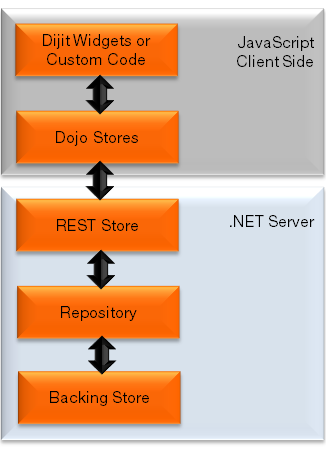Table of Contents
Introduction
The creation of user interface elements is based on JavaScript and the
Dojo toolkit.
When the application starts up, a user interface definition is retreived
from a REST store on the web server, and then
instantiated on the client.
The server side user interface definition, called a view, is declared dynamically,
composed from a definition in code, or configuration on the server. More information
about the server side assembly of user interface components can be found in the document
View Composition.

Introduction to Dojo
The Dojo toolkit is a client side framework for building rich internet applications
hosted in a web browser, see Introduction
to Dojo.
Client Side Messaging Using Publish/Subscribe
Publish/subscribe is a well known pattern for promoting decoupled messaging and
communication between independent application building blocks. The Dojo toolkit
provides functionality to facilitate this kind of communication, see
Publish/Subscribe Pattern.
Client Side Service Location
The epi.dependency implementation is a light weight service locator implementation
to facilitate a decoupled client side architecture. The service locator is used for registering dependencies
shared in a loosely coupled fashion, see Service
Location Support.
Using jQuery
Even though the user interface is based on the Dojo Toolkit, support
for jQuery based UI components still remains. The jQuery core javascript functionality
is generally available throughout the user interface, but any additional
jQuery dependencies must be added separately.
Do you find this information helpful? Please log in to provide feedback.
